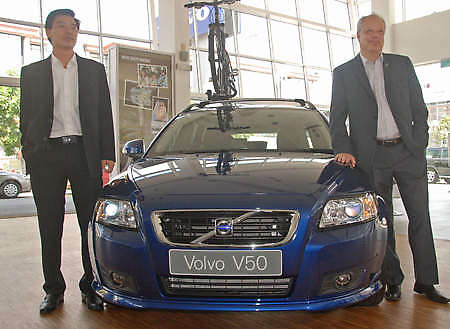
Following the introduction of the S40 2.0 Powershift last year, Volvo launched the V50 wagon with the same drivetrain this morning. The V50 2.0 Powershift is powered by a 145 bhp/185 Nm 2.0-litre engine (which is essentially the Duratec engine found in the Ford Focus) mated to a six-speed dual-clutch transmission called Powershift, also from Ford. Like the S40, this variant replaces the 2.4-litre five-pot V50 – fuel consumption is reduced by up to 11% with this new drivetrain, says Volvo.
Compared to the V50 2.4i, this new variant has a few new features, such as Blind Spot Information System (BLIS), Dynamic Stability Traction Control (DSTC), bi-xenon headlights, keyless entry and a new Brilliant Blue colour. BLIS is a Volvo innovation which alerts the driver of vehicles “hiding” in his/her blind spot. A warning light inside of the side mirrors illuminate in such a case, so you know when not to change lanes.
The locally assembled V50 2.0 Powershift is priced at RM185,950 (OTR without insurance), which is RM16,000 more than the equivalent S40. The blue car you see here comes with optional extras such as roof rack, a subtle bodykit and blue dials from Volvo’s R-design catalogue – the latter looks good and works well in breaking up the monotony of an all-black cabin.
For more info on the 2.0 Powershift drivetrain, check out our previous post here.
Looking to sell your car? Sell it with Carro.


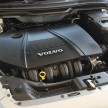
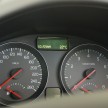

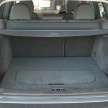
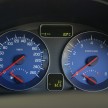
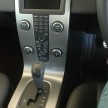
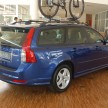
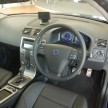
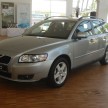
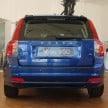
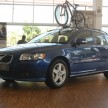











AI-generated Summary ✨
The comments mainly discuss the launch of the Volvo V50 2.0 Powershift, with opinions on its pricing, engine power, and features. Many express concern over the car being underpowered with the 2.0 engine, suggesting a preference for the more powerful T5 version. Some mention the vehicle's safety, reliability, and value, noting the dual-clutch transmission as an advantage, while others critique the high maintenance costs and depreciation. There are also discussions about the local assembly status, with some noting Volvo's presence in Malaysia since the 1960s. Price objections are common, with comparisons to similar European models and concern over the value for money considering engine performance and costs. Overall, the comments show mixed opinions on the vehicle's performance, price, and market positioning.